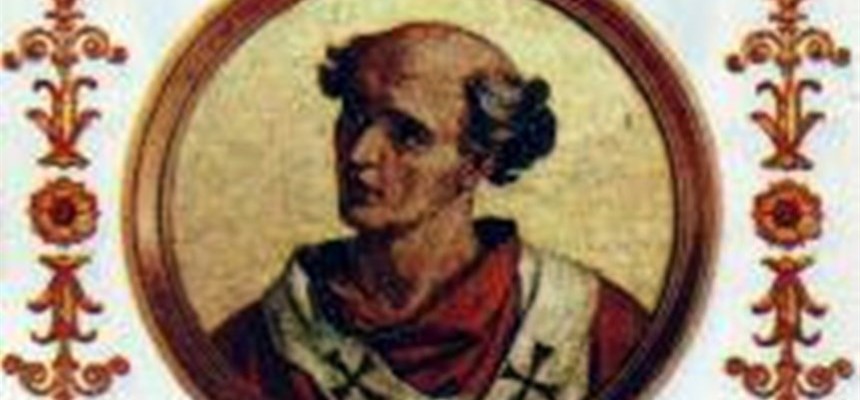
In the 9th century, that is to say the 800s, the aristocratic community lived in the area of Via Lata, near the current Trevi Square and near an aqueduct, a source of clean water. Leontius, a Roman noble who lived in that neighborhood, had a son, Valentine, who showed an early aptitude for learning. As a good father with noble aims, Leontius sent his son to the school attached to the Lateran Palace, the place where the popes lived.
Since Valentine’s biographer in the Liber Pontificalis praises the young man for his piety and purity of morals, we can see why Pope Paschal chose the him as someone special to watch and assist, spiritually. By 820, Valentine, probably about 30, was made a deacon by Pope Paschal, and served at St. John Lateran. The young man was much favored by the pope, who raised him to the status of archdeacon within a few years. An archdeacon is the head of the Roman diaconate.
After the death of Pope Paschal, when Eugenius was raised to the See, Valentine was favored by the new pope, as well. Perhaps too well. Rumors arose that Valentine was the son of Eugenius, hence all the attention. Or perhaps, there was something more illicit going on, said the rumors.
Pope Eugenius died on 27 August, 827. The death of this pope marked the first death since the Constitutia Roma was signed by King Lothair, co-emperor with Louis the Pious, and Pope Eugenius. This Consitutia called for an end to certain protocols established by the Lateran Council of 769, headed by Pope Stephen II. One of the protocols was to claim that the clergy alone was responsible for the papal elections. The Consitutia required lay, especially nobles, to assist in the electoral process. This first foray into the new rules caused a noble to be elected and all nobles to take part. This was a sign of the increased influence of Roman nobility and the gradual encroachment into the election process which continued into the 10th century.
Once the nobility, clergy and laity acclaimed Valentine as most worthy to occupy the Apostolic See, they had to find him. He was found in prayer at Santa Maria Maggiore. Despite his protestations, the crowd took him to the Lateran and made him sit on the throne. The problem was that Valentine was not a priest at the time of his enthronement. That was the first time it had ever happened. The following Sunday, August 31, the new pope was ordained and consecrated bishop.
Due to the few days between the death of Pope Eugenius and the consecration of Pope Valentine, there was not time for the emperor or his representatives to arrive. This was against the Contitutia Roma, which said it would not suffer the pope-elect to be consecrated save in the presence of the emperor’s envoys and an oath of homage from the newly elected Pope.
The worst part was that within five weeks, Valentine was dead and was never ratified by the Emperor. Pope Valentine never got much of consequence done. He was buried somewhere at the Vatican, but there are no records saying where.

Recent Comments